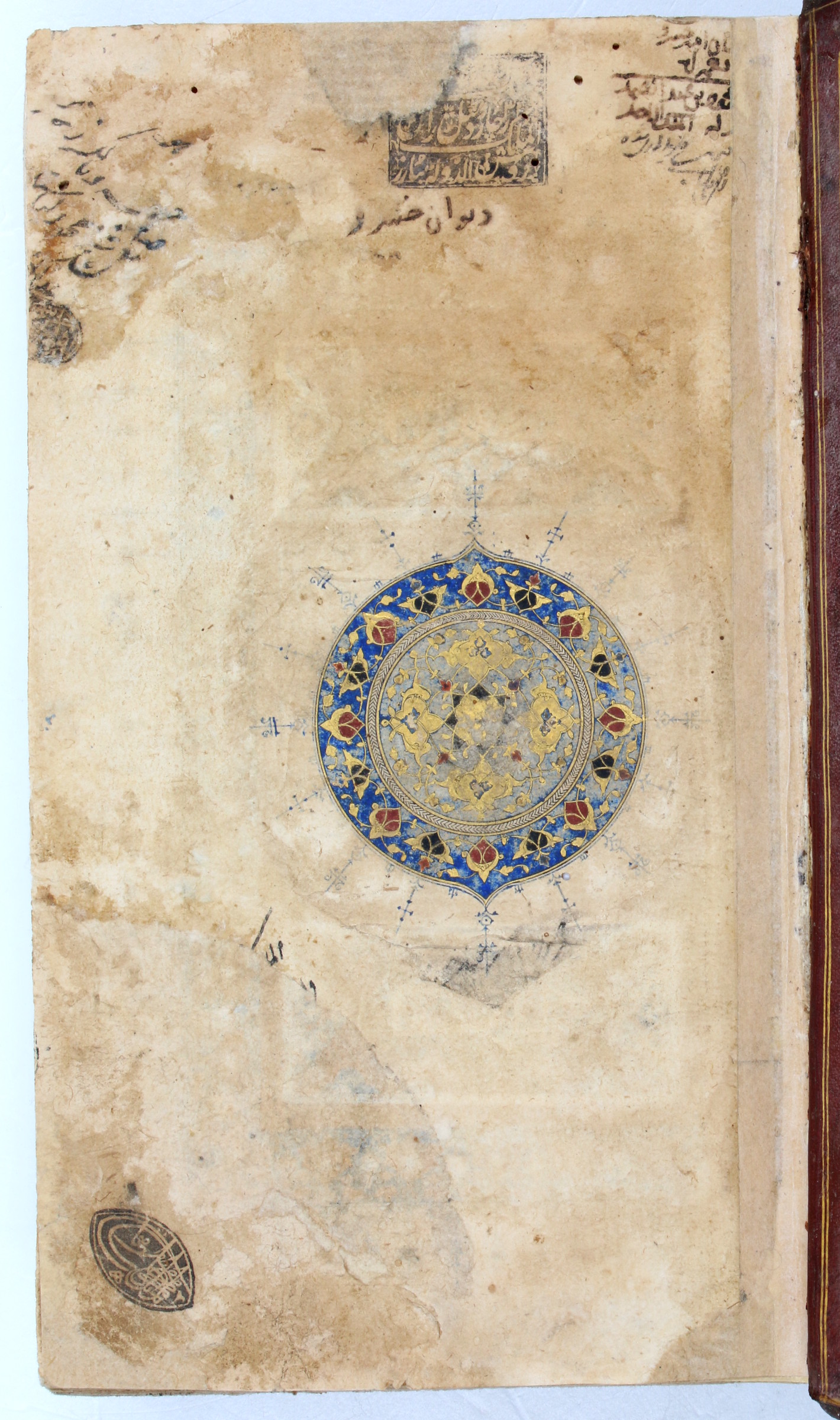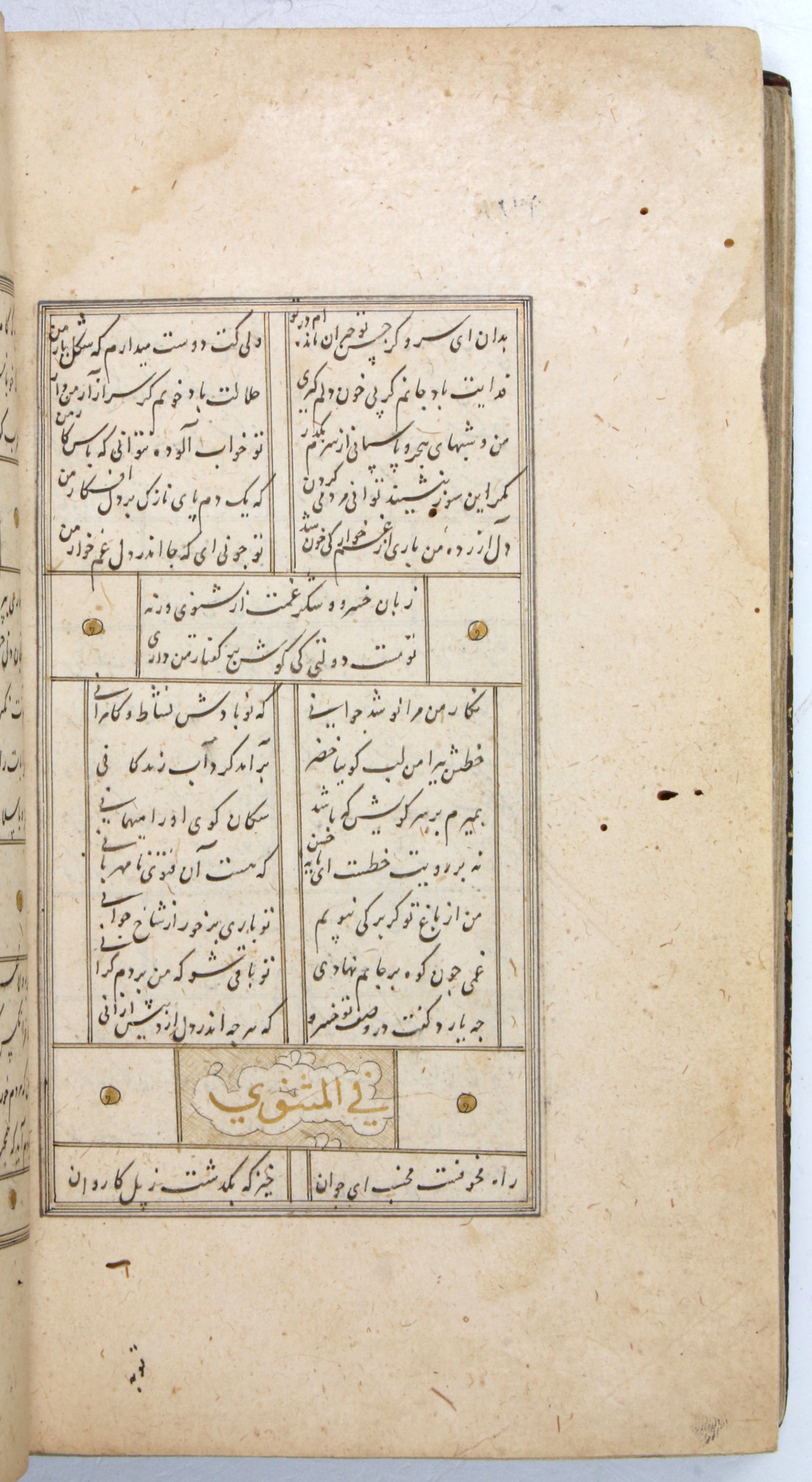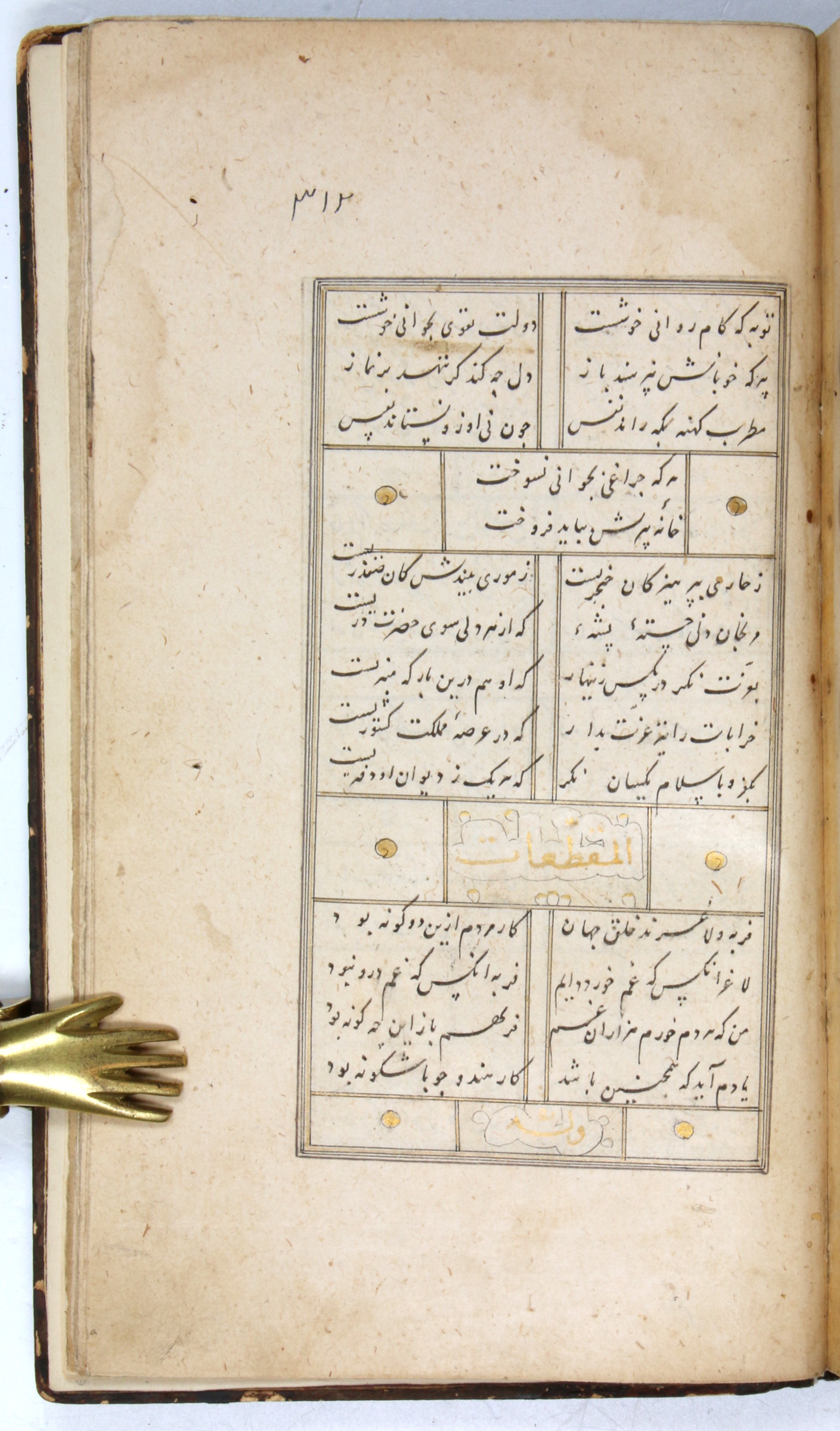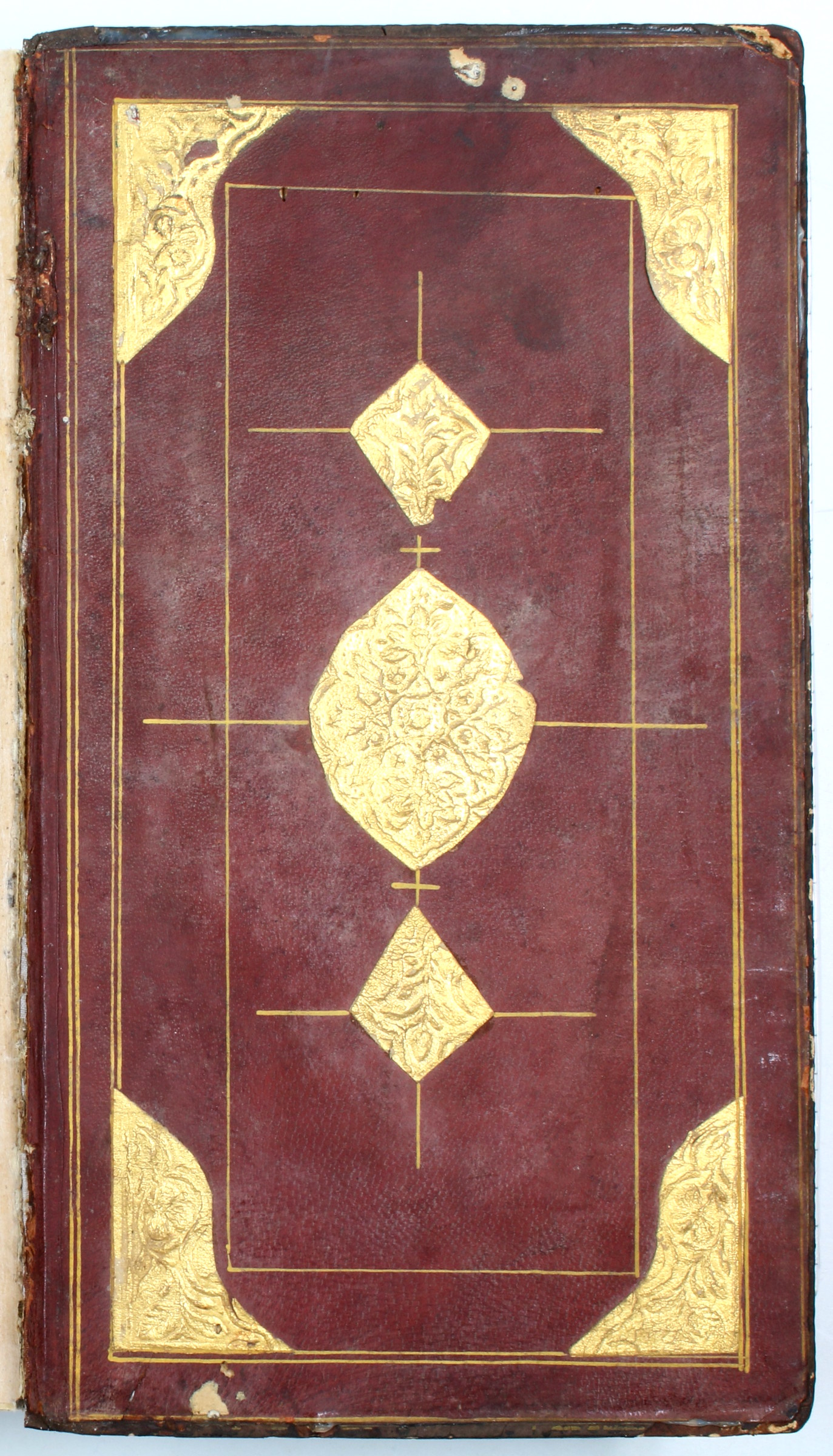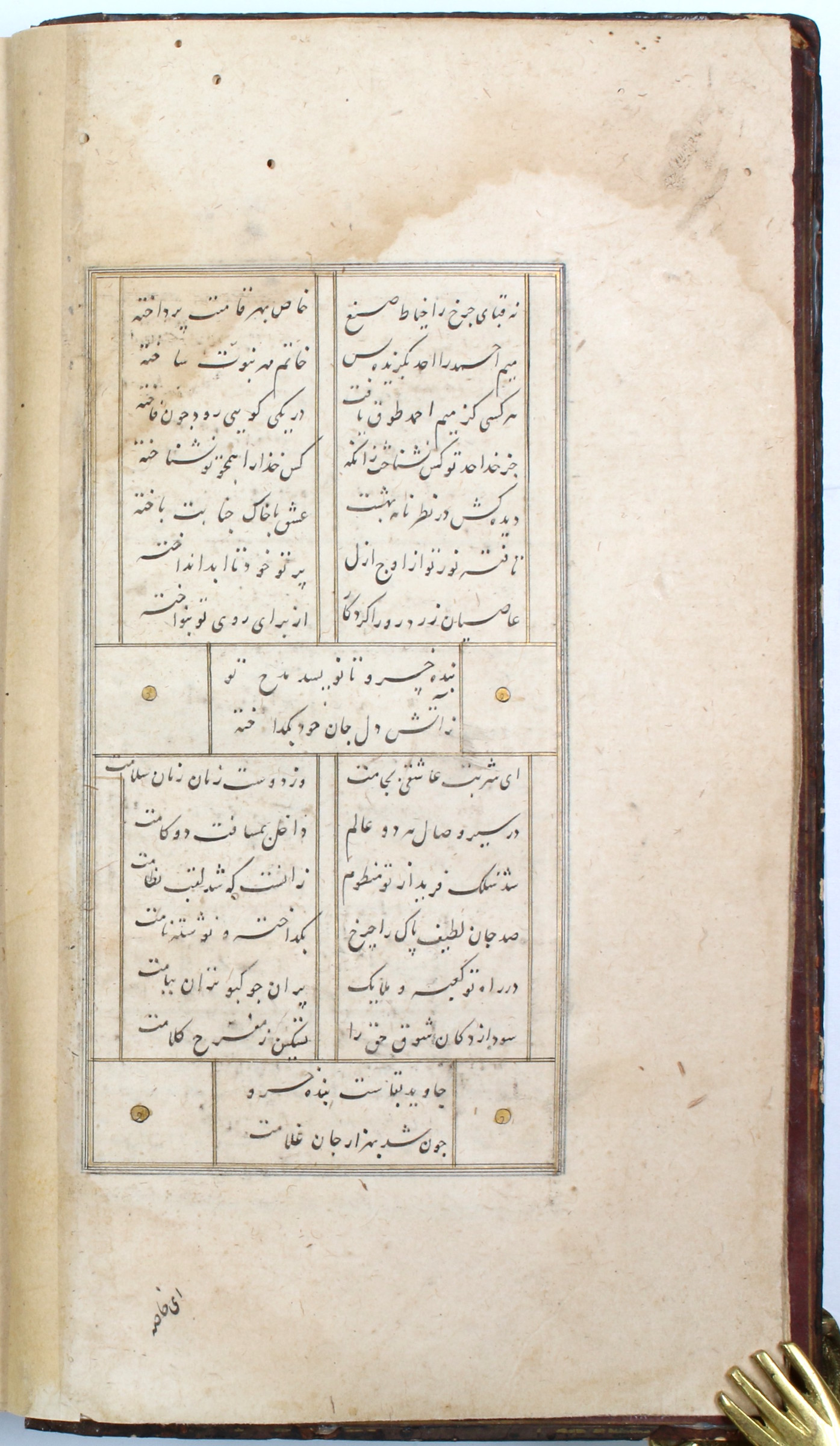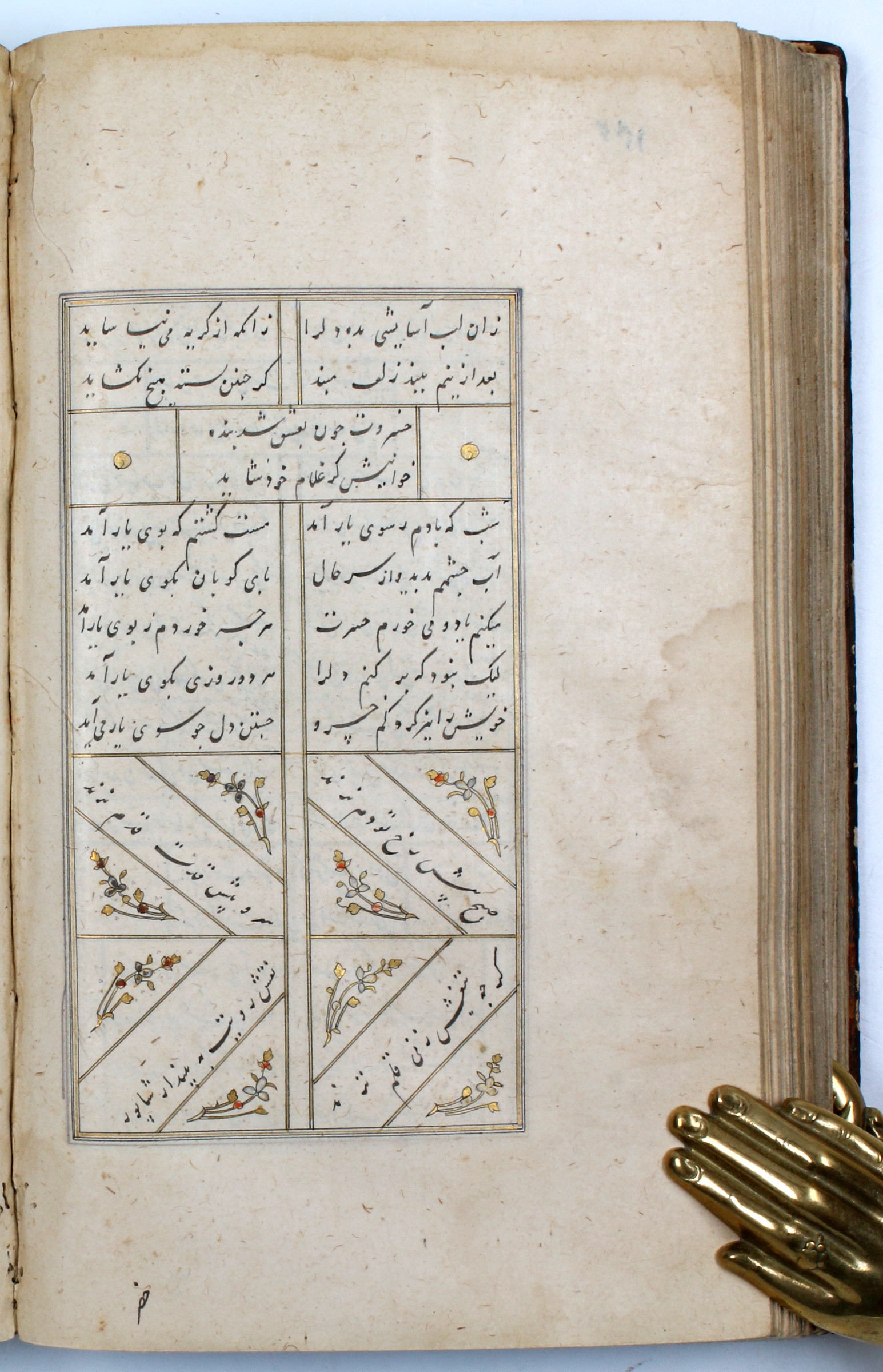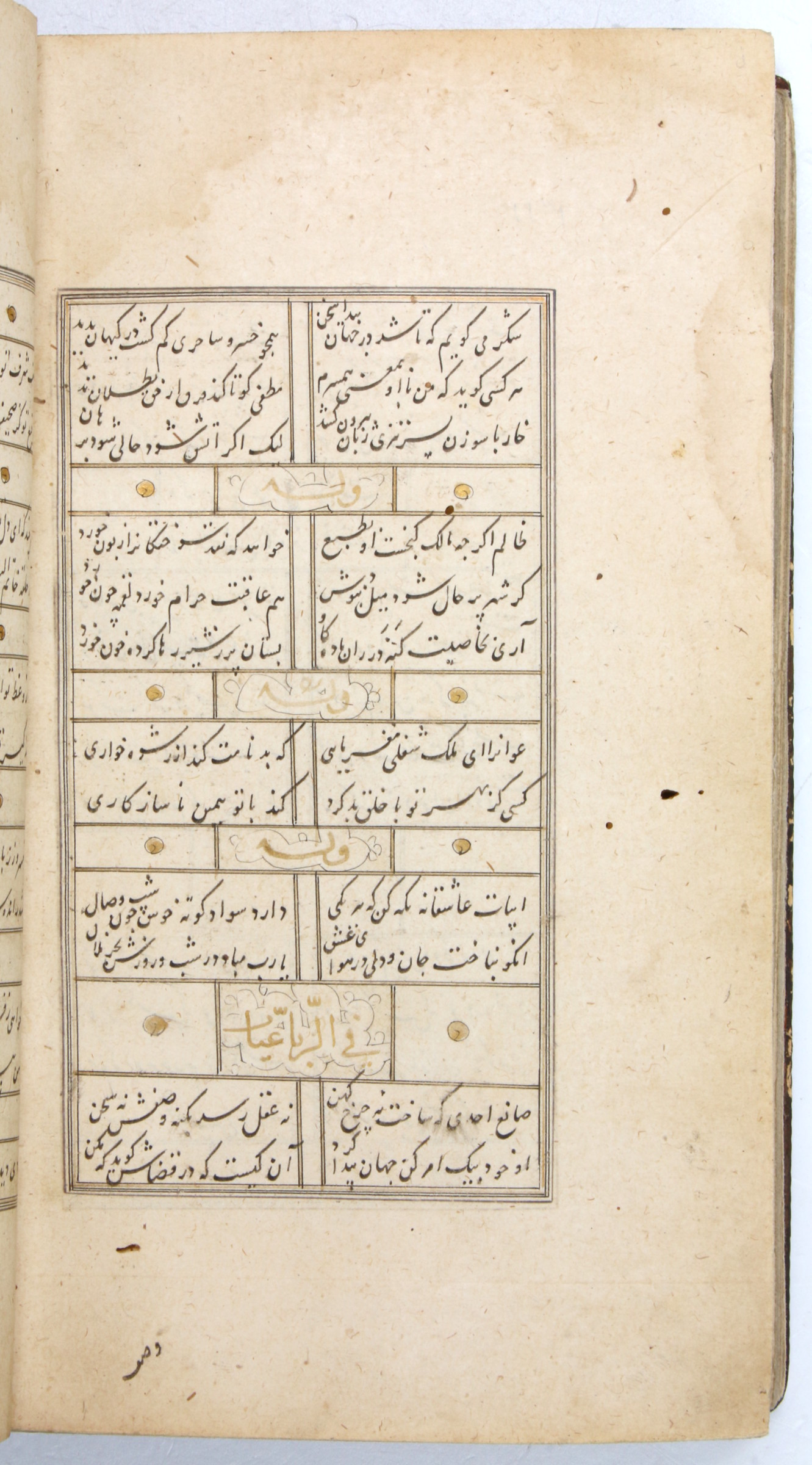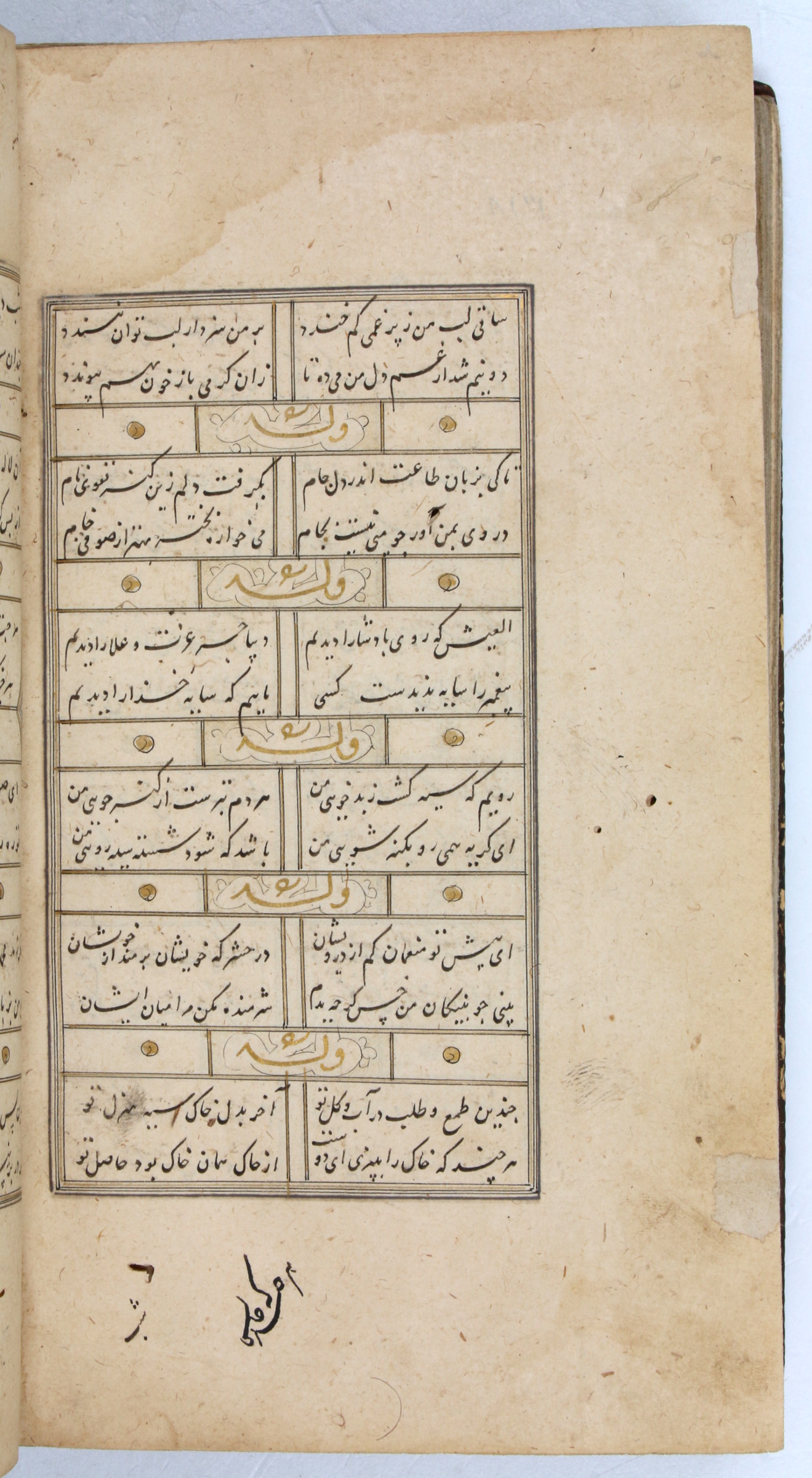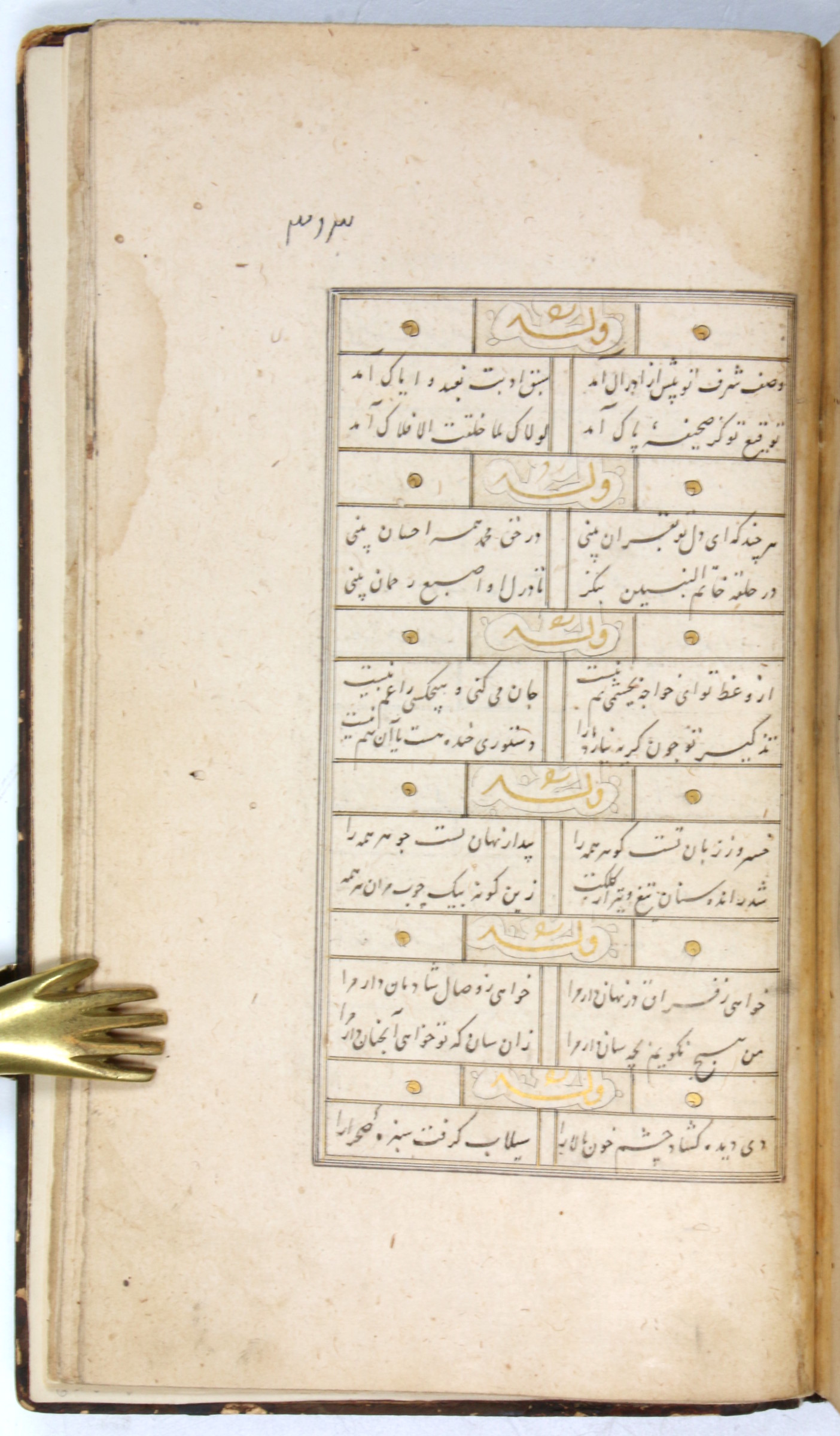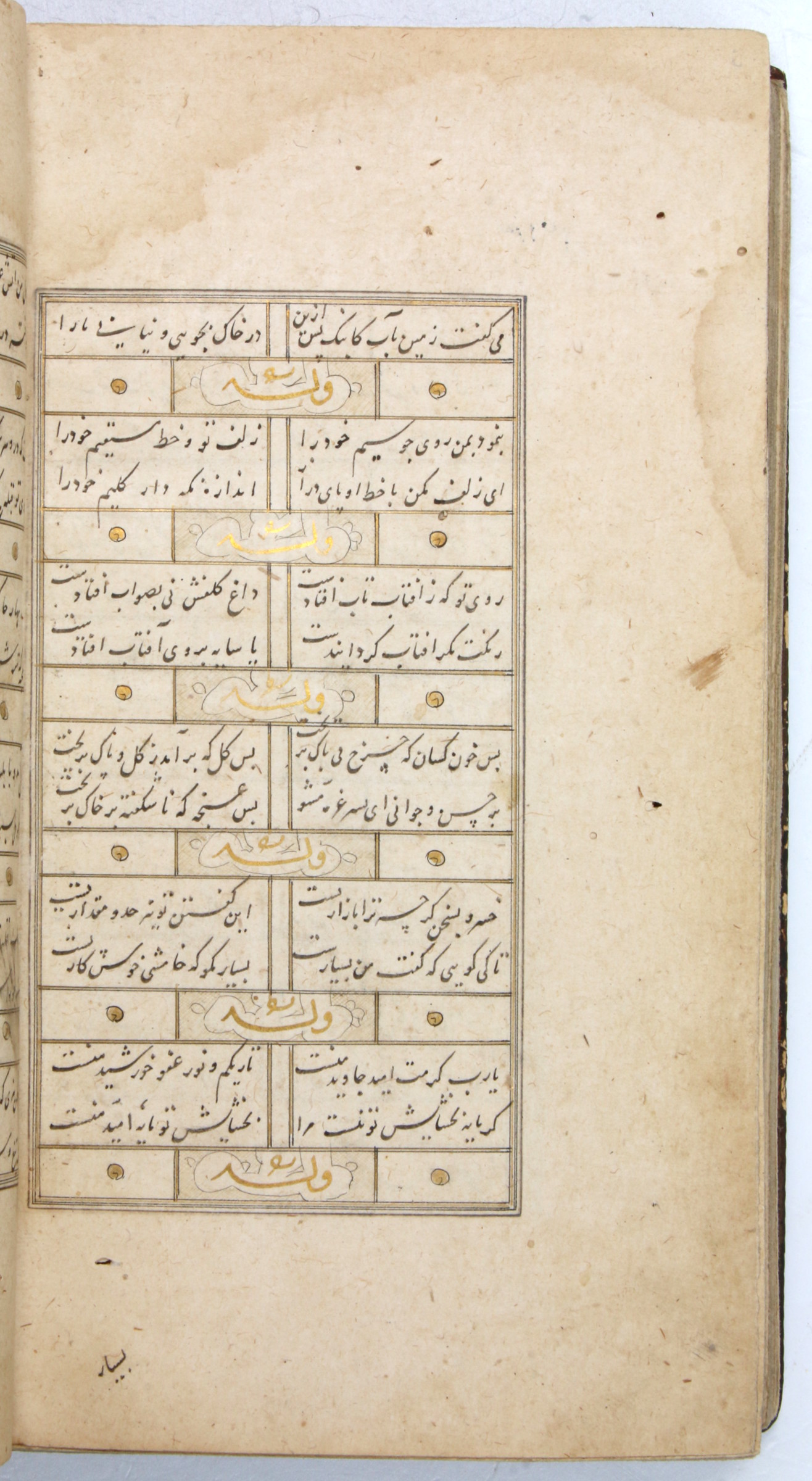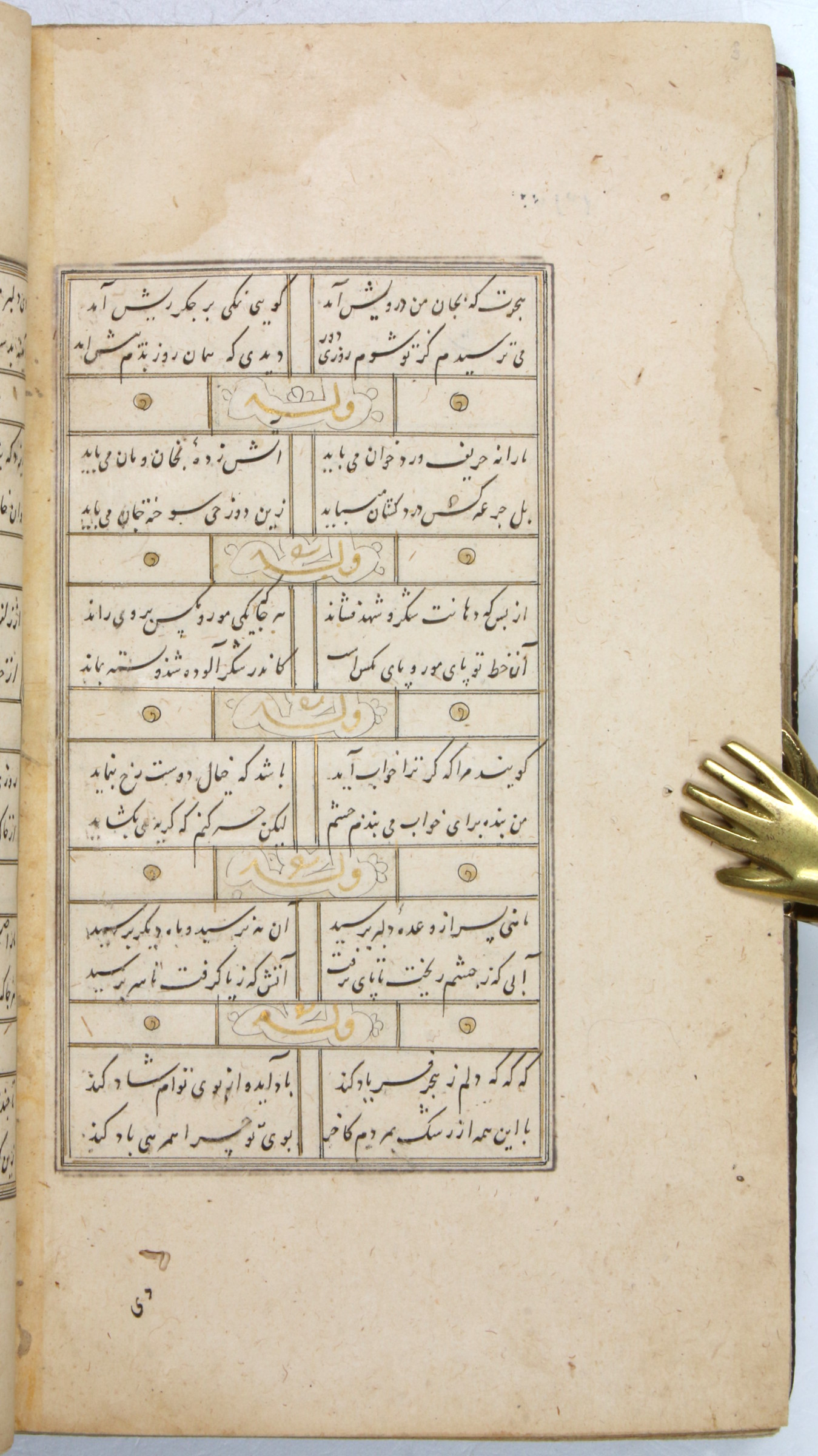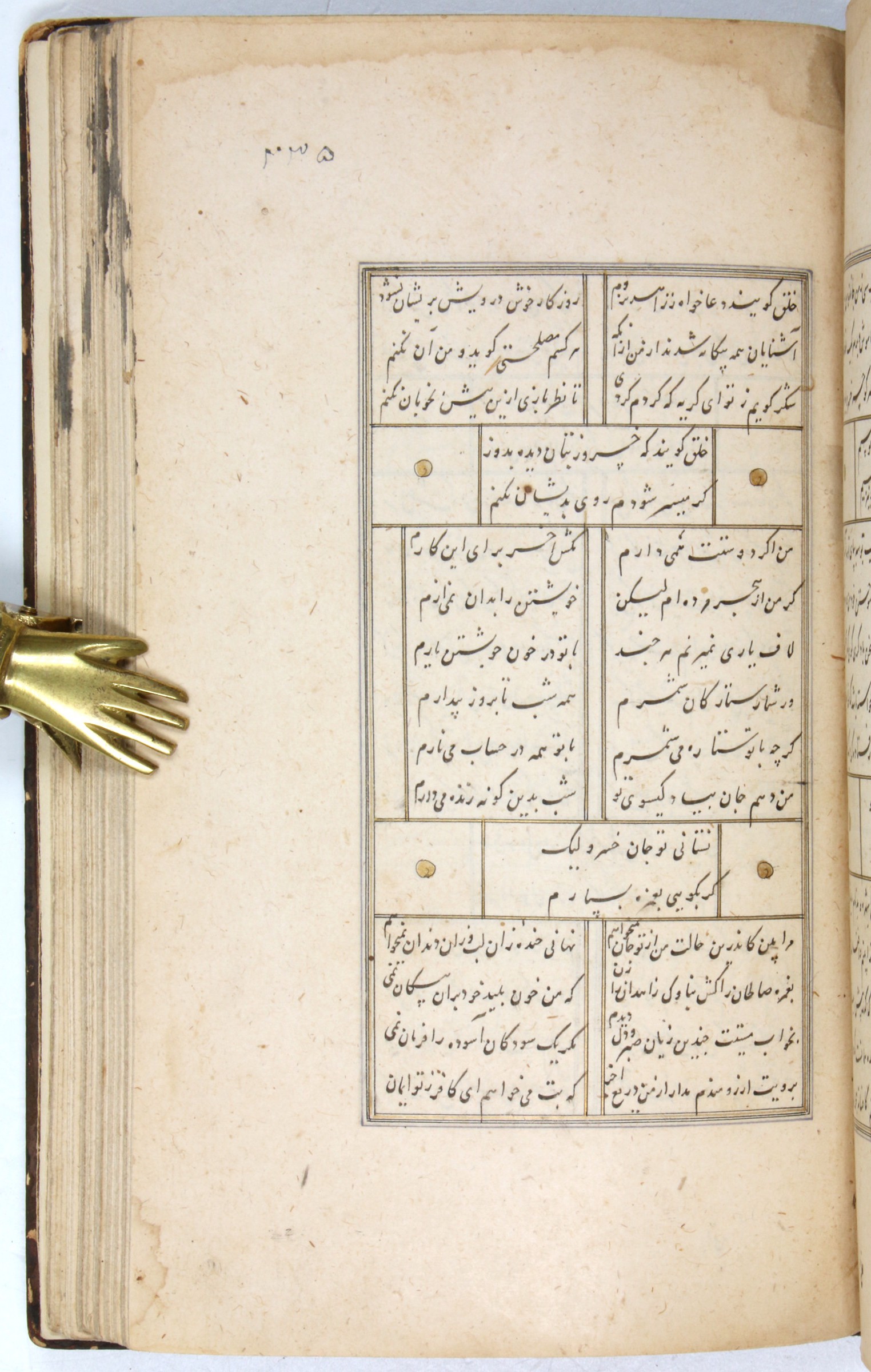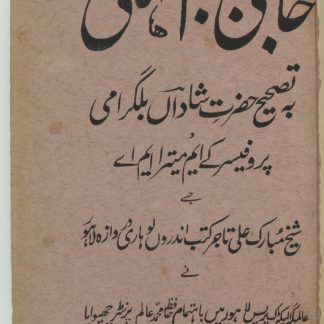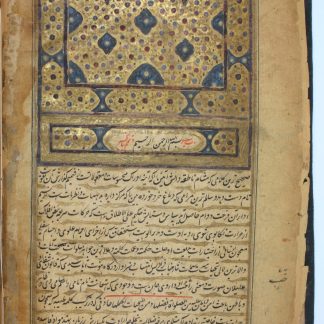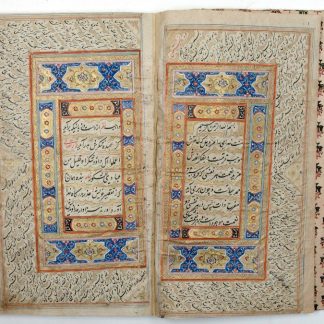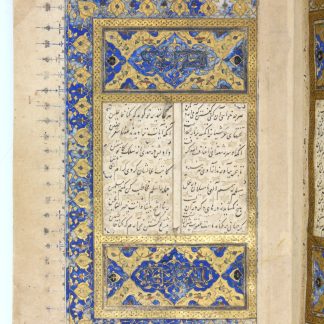Indo-Persian poetry, successively owned by a Sultan and a British spy in India
Diwan-i Amir Khusraw Dihlavi.
8vo (130 x 220 mm). 321 ff. Persian manuscript on polished paper. 17 lines of black nasta'liq set in two columns with gilt borders, titles in gilt, elegant blue and gilt shamsa frontispiece, 'unwan page decorated with gold and blue, text in clouds. Full leather binding, rebacked, remains of earlier morocco and gold bindings preserved in inner covers.
€ 150,000.00
A fine manuscript of the "Diwan-i Khusraw", a highly important text of Indo-Persian poetry, owned by the Ottoman Sultan Bayezid II (1447-1512) and later by R. W. Rotton, a British spy in India, and copied by a renowned 15th century nasta'liq scribe, Muhammad Ibn Muhammad Baqqal.
Amir Khusraw (1253-1325), also known as "the Parrot of India", was a celebrated Indo-Persian Sufi musician, poet and scholar. He was famous for his ease of writing in different poetic styles: this example is a Diwan, or compilation, composed mostly of ghazals alongs with qasidehs, na'ats, rubais, and qit'as. Sultan Bayezid II had inherited a great number of books from his father, Sultan Mehmet II, and continued to build the collection into a very impressive library. In 1502 he ordered the royal librarian 'Atufi to create an inventory of the books in the royal library: this catalogue records more than 7,000 titles, among which are no fewer than 13 copies of "Diwan-i Khusraw".
The manuscript was most likely penned around the end of 15th century: the earliest recorded copy attributed to Ibn Muhammad Baqqal is a "Shahnameh" copied in 1464 (held in the Topkapi Palace Museum, TSMK H.1496), while the latest dated example is a copy of the "Acâ’ib al-mahlükat al-Kazvini" (Süleymaniye Library, Fatih 4172), written 1501.
A meticulously crafted manuscript from the Ottoman royal library, giving eloquent proof of the cultural synthesis that took place in the Indian subcontinent and the Timurid Empire from the 14th century onward.
1. With the official oval stamp of Sultan Bayezid II (1447-1512).
2. Also with the rectangular stamp of Major Richard Whytell Rotton (1770-1810), English mercenary and one of Richard Wellesley’s most highly prized spies in India, on the first folio: "Rawshan al-Dawlah Mubariz al-Mulk Richard Vital Ratin As'ad Bahadur Sabit" (the same stamp is also in another MS in the Manchester Library: Baharistan-i Jami, Persian MS 305).
3. Sotheby's, 30 April 1992, lot 35.
4. Christie's, 5 October 2010, lot 192.
5. Sotheby's, 25 April 2012, lot 415 (misdated 1522 AD and misidentified as a Khamsa).
Covers worn and rebacked, early morocco covers preserved. Some dampstaining, a few paper repairs, ink smudges, browning, and worming. Occasional stains, only few within the text; small stain on fore-edge. Two marginal poems (ff. 80, 194) and two marginal corrections.
Masoumeh Mohammadinezhad Hüseyni, "Akkoyunlu Türkmen Sultani Halil’in Kitap Sanati Hamiligi" (PhD thesis). Istanbul, Mimar Sinan Güzel Sanatlar Üniversitesi, 2021, pp. 217-223. Gülru Necipoglu, Cemal Kafadar, and Cornell H. Fleischer, Treasures of Knowledge: An Inventory of the Ottoman Palace Library (1502/3-1503/4) (2 vols). Leiden, Brill, 2019.


